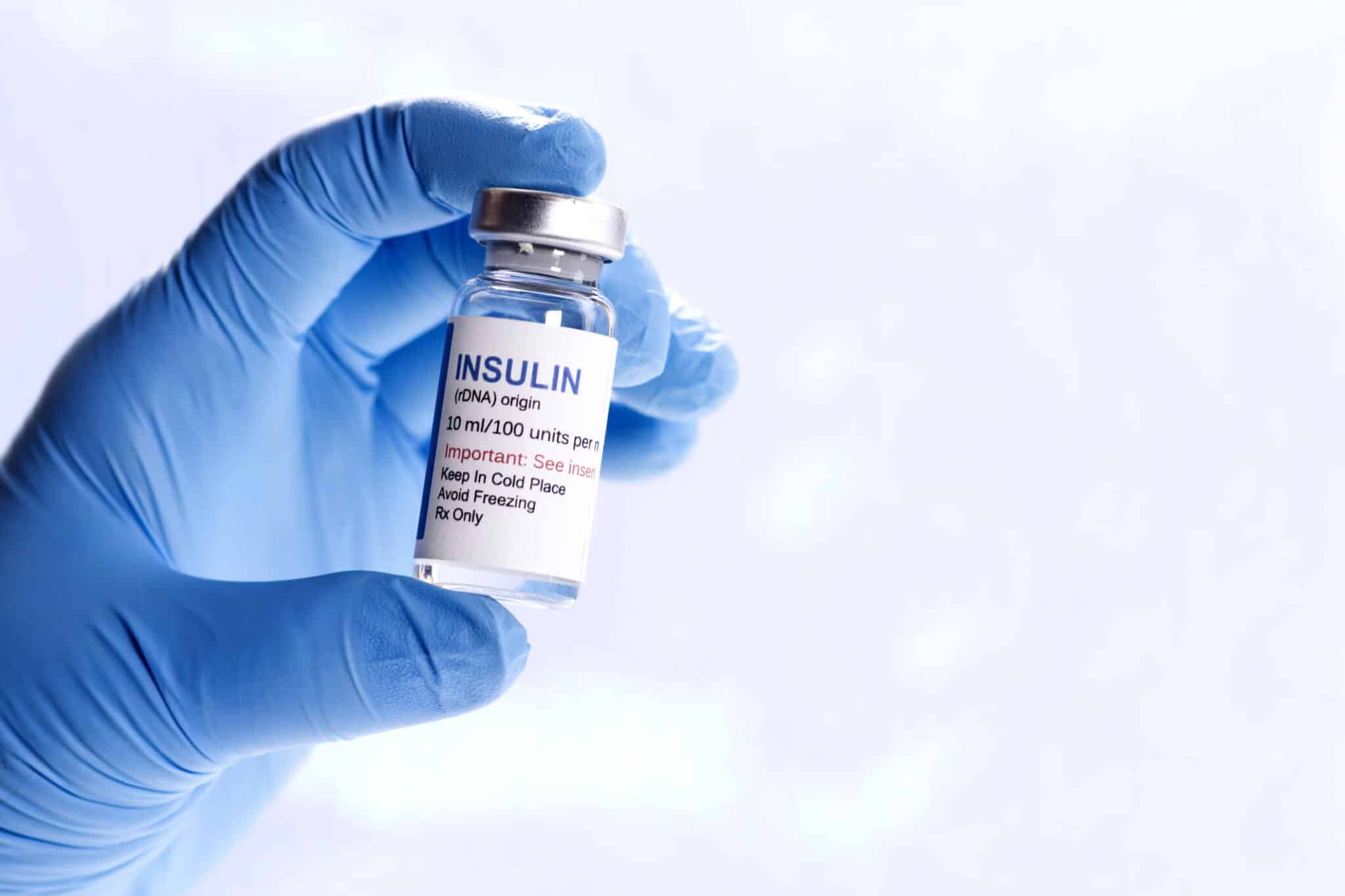
The Difference Between Fast-Acting and Slow-Acting Insulin
Posted on September 07, 2021 at 12PM
Understanding the difference between fast-acting and slow-acting insulin is essential for people with diabetes. Whether you have type 1 or type 2 diabetes, insulin plays a crucial role in maintaining stable blood sugar levels. With various types of insulin available—such as Humalog, Lantus, Apidra, Basaglar, Novolin R, Humulin R, and Tresiba—knowing how each brand name works can make all the difference in your treatment plan and overall health. A person managing diabetes needs clear information on the effectiveness, risk, and specific topics related to each insulin type. Understanding these things helps you explore the best ways to maintain glucose control.
The Basics of Insulin and Diabetes Management
Insulin is a hormone produced by the pancreas that helps regulate blood sugar, also known as glucose, in the bloodstream. For patients with diabetes, especially those with type 1 diabetes and many with type 2 diabetes, the body either doesn’t produce insulin or can’t use it effectively. That’s where insulin therapy comes into play. There are different types of insulin—fast-acting (also called rapid-acting), slow-acting (long-acting or basal), and intermediate—all working with different timing, duration, and onset. Speaking with a healthcare professional is essential to determine the best option for your needs. Understanding your rights as a patient can empower you to make informed decisions. If something isn’t working, you may need to explore a substitute insulin type. Real-world examples and patient accounts can provide valuable insights into the effectiveness of each insulin category.
Fast-acting insulin, such as insulin lispro (Admelog, Humalog), insulin aspart (Fiasp, Novolog), insulin glulisine (Apidra), and Afrezza (inhaled insulin), starts working quickly—often within 15 minutes of injection—and peaks in about an hour. These insulins are typically taken before a meal to help manage blood sugar spikes after eating. It’s essential to consider individual factors like diet, activity level, and even weight loss, which can alter how your body responds to these medicines. Using the correct needle size and following directions from a healthcare provider ensures optimal effect. In the United States, these fast-acting insulins are approved for various diabetes treatment needs, helping people manage blood sugar effectively around meals.
On the other hand, slow-acting insulin—like Lantus (insulin glargine), Basaglar, Tresiba (insulin degludec), and Levemir (insulin detemir)—works gradually over time to keep blood sugar levels stable between meals and overnight. These insulins are foundational to maintaining reasonable blood glucose control throughout the day and night.
Fast-Acting Insulin: What You Need to Know
Rapid-acting insulins are designed for quick absorption into the bloodstream. Their short onset and peak action make them ideal for managing post-meal blood sugar spikes. These insulins can be delivered through a syringe, insulin pen, or insulin pump.
People using rapid-acting insulins often take them with meals. The dosage depends on factors like the meal’s carbohydrate content, current blood glucose levels, and activity levels. Common brand names include Humalog, Novolog, Apidra, Admelog, Lyumjev, and Afrezza.
One of the advantages of these insulins is their ability to closely mimic the body’s natural insulin response to food. However, incorrect timing or dosage can lead to side effects such as hypoglycemia (low blood sugar), which can be dangerous if not treated quickly. Healthcare professionals recommend working with a doctor or certified diabetes educator to understand timing, doses, and peak effects.
Key Points About Fast-Acting Insulin:
- Onset: 5 to 15 minutes
- Peak: 30 to 90 minutes
- Duration: 3 to 5 hours
- Typical uses: Mealtime blood sugar control
- Administration: Injection or insulin pump
Slow-Acting Insulin: Consistency is Key
Slow-acting or long-acting insulins provide a steady, low insulin level over an extended period. These insulins are often taken once or twice daily and are foundational for people with type 1 or type 2 diabetes. Products such as Lantus, Basaglar, Tresiba, and Levemir fall into this category.
Unlike fast-acting insulin, long-acting insulin doesn’t spike but offers constant support. It mimics the pancreas’ basal insulin output, allowing patients to maintain consistent blood sugar levels even when not eating. This type of insulin is essential overnight and between meals.
Doctors often recommend a combination of long-acting and short-acting insulin to offer full-day blood sugar control. This is called basal-bolus therapy, an effective insulin therapy method for many patients with type 1 diabetes.
Key Points About Slow-Acting Insulin:
- Onset: 1 to 2 hours
- Peak: Minimal or no peak
- Duration: Up to 24-42 hours, depending on the brand
- Typical uses: Basal insulin coverage
- Administration: Usually via injection with a pen or syringe
Intermediate-Acting Insulin: The Middle Ground
Intermediate-acting insulin, such as NPH insulin (Humulin N, Novolin N), falls between fast-acting and slow-acting. It is often combined with short-acting insulins for dual coverage. While less commonly used today, intermediate-acting insulin is still prescribed in specific treatment plans.
This type of insulin usually has an onset of 1 to 2 hours, peaks at 4 to 12 hours, and lasts 12 to 18 hours. Some patients take intermediate insulins twice a day to maintain balanced glucose levels.
Choosing the Right Insulin: Factors and Considerations
Choosing the correct insulin involves multiple factors, including:
- Type of diabetes (type 1 or type 2)
- Patient’s age and lifestyle
- Meal patterns
- Injection site preferences (arm, thigh, abdomen)
- Medication tolerance and side effects
- Activity levels and metabolism
- Doctor’s recommendations and guidelines from the American Diabetes Association
The combination of insulins and dosages often varies. Some people with type 2 diabetes may start with long-acting insulin and later add rapid-acting insulin if blood sugar levels are not adequately controlled. For type 1 diabetes, most treatment plans begin with a combination of both.
Tools and Products That Help
Many tools and devices help manage insulin therapy, including:
- Insulin pens and insulin pumps for ease of use
- Blood glucose monitors and continuous glucose monitoring (CGM) devices
- Injection site aids and reminders
- Apps for tracking blood sugar, diet, and medication
Patients are encouraged to work with healthcare professionals to find the most effective tools. Some use syringes, while others prefer insulin pens or pumps, especially when combining basal and bolus insulin.
Managing Blood Sugar Around Meals
Understanding how insulin interacts with food is essential. Meals high in carbohydrates cause blood sugar levels to rise quickly, necessitating rapid-acting insulin. Patients often count carbs and calculate insulin-to-carb ratios. A healthcare provider may offer guidelines to help match insulin amounts with food intake.
In contrast, long-acting insulin isn’t tied directly to food but works in the background. Still, patients must be mindful of meal timing to avoid hypoglycemia or hyperglycemia, especially if insulin is administered without eating soon after.
Insulin Side Effects and Risks

Educational insulin guide created by More Cash for Test Strips in Carson California explains the differences between fast acting and slow acting insulin for better diabetes care
While insulin therapy is life-saving, it comes with potential side effects. The most common is hypoglycemia, especially when using fast-acting insulin without enough food. Symptoms include shakiness, confusion, sweating, and, in severe cases, loss of consciousness.
Other possible issues include weight gain, skin reactions at the injection site, and, rarely, insulin resistance. Some patients may experience allergic reactions to specific brand names or preservatives. Tools like insulin pens with fine needles and proper rotation of injection sites can reduce discomfort and side effects.
Importance of Timing and Dosage
Timing and dosage are critical in insulin therapy. Each person’s body, metabolism, and diabetes condition are different. Timing insulin correctly—whether before meals, after meals, or before bedtime—can prevent dangerous fluctuations in blood sugar.
Dosage depends on various factors such as:
- Body weight
- Meal size and type
- Activity levels
- Type of insulin used
- Timing of previous doses
Healthcare providers tailor insulin regimens using patient data, such as blood sugar readings, weight changes, and overall diabetes management goals.
Insulin Education and Support
Many patients have questions about insulin types, brand names, and administration. Online platforms, diabetes communities, and tools like FAQs, news updates, and support groups offer valuable advice. Healthcare professionals, such as endocrinologists, diabetes educators, and nutritionists, provide personalized treatment plans.
Patients also turn to resources like the American Diabetes Association and trusted medical sites for updated guidelines on treatment, administration, and managing side effects.
The Purpose Behind Selling Diabetic Test Strips
Some people sell diabetic test strips for many reasons. Often, patients switch medications, receive excess supplies, or no longer need the same brand. Sometimes, they experience changes in their insulin regimen or healthcare coverage. Instead of letting supplies go to waste, they sell them to services like More Cash for Test Strips.
Understanding why people sell diabetic test strips helps others access affordable diabetic products and contributes to better diabetes and blood sugar level management in the community. It’s an essential part of the ecosystem of support, choice, and accessibility in diabetes care.
The Role of Insulin in Blood Sugar Regulation
Insulin regulates blood glucose by allowing sugar to enter cells for energy use or storage. When insulin isn’t functioning correctly, blood sugar remains high, leading to hyperglycemia. Long-term hyperglycemia can damage blood vessels, nerves, and organs.
Conversely, too much insulin can lead to hypoglycemia. Maintaining a healthy balance through the right combination of basal (slow-acting) and bolus (fast-acting) insulin helps prevent complications.
Insulin also influences metabolism and plays a role in weight management, especially when combined with diet, exercise, and medication.
Final Thoughts on Fast-Acting vs. Slow-Acting Insulin
Managing diabetes requires understanding the types of insulin and how they affect blood sugar. Fast-acting insulin provides rapid control during meals while slow-acting insulin maintains steady glucose levels in the background. Both are essential tools in managing type 1 and type 2 diabetes.
Using the correct insulin—whether Humalog, Lantus, Basaglar, Apidra, Tresiba, Levemir, or others—depends on personal needs, medical history, and professional guidance. Patients benefit most when they understand their condition, use proper tools, and make informed choices.
Whether you are newly diagnosed or have been managing diabetes for years, knowing the difference between fast-acting and slow-acting insulin—and how to use them effectively—can significantly improve your health, energy, and quality of life.
If you have extra supplies like insulin pens, test strips, or glucose monitors, consider helping others while reducing waste. Visit More Cash for Test Strips today to learn how to sell unused diabetes products and contribute to the diabetes support community.
Frequently Asked Questions
1. Can I take fast-acting and slow-acting insulin at the same time?
Yes, many people use both as part of a basal-bolus regimen. Fast-acting insulin covers meals while slow-acting insulin controls blood sugar between meals and overnight.
2. How should I store insulin to keep it effective?
Unopened insulin should be kept in the refrigerator, while opened or in-use insulin pens/vials can be stored at room temperature for 28 days unless otherwise specified by the manufacturer.
3. What happens if I accidentally skip a dose of long-acting insulin?
Missing a long-acting dose can raise blood sugar levels. Contact your healthcare provider for specific guidance and monitor your glucose closely.
4. Do insulin types affect weight gain differently?
Some insulin types, particularly long-acting insulins, may contribute more to weight gain due to continuous glucose storage. Fast-acting insulin can also contribute, especially with poor dietary balance.
5. Are there insulin types specifically better for children or seniors?
Yes, some insulins are approved and tailored for pediatric or geriatric use. Dosing flexibility and ease of use are significant factors in selection for these age groups.
6. Can you be allergic to certain types of insulin?
Although rare, some people can experience allergic reactions to the insulin or additives in specific brands. Symptoms include redness, itching, or swelling at the injection site.
7. How does physical activity affect fast-acting and slow-acting insulin?
Exercise can lower blood sugar and increase insulin sensitivity. Fast-acting insulin may be reduced before workouts to avoid hypoglycemia, while long-acting insulin may require dose adjustments based on regular activity levels.
8. Is there a difference in cost between fast-acting and slow-acting insulin?
Yes, the cost can vary significantly depending on the brand, insurance coverage, and whether you use a pen, vial, or pump. Long-acting insulins like Tresiba and Toujeo often cost more than older rapid-acting options.
9. Can I mix fast-acting and intermediate-acting insulin in the same syringe?
In some cases, yes. For example, regular insulin (short-acting) can be mixed with NPH (intermediate-acting), but not all combinations are safe. Always consult your provider before mixing insulins.
10. What should I do if I experience frequent low blood sugar with fast-acting insulin?
You may need to adjust your dosage or timing or reevaluate your carbohydrate intake. Speak to your healthcare provider for a revised insulin plan, and consider using a continuous glucose monitor for better tracking.

